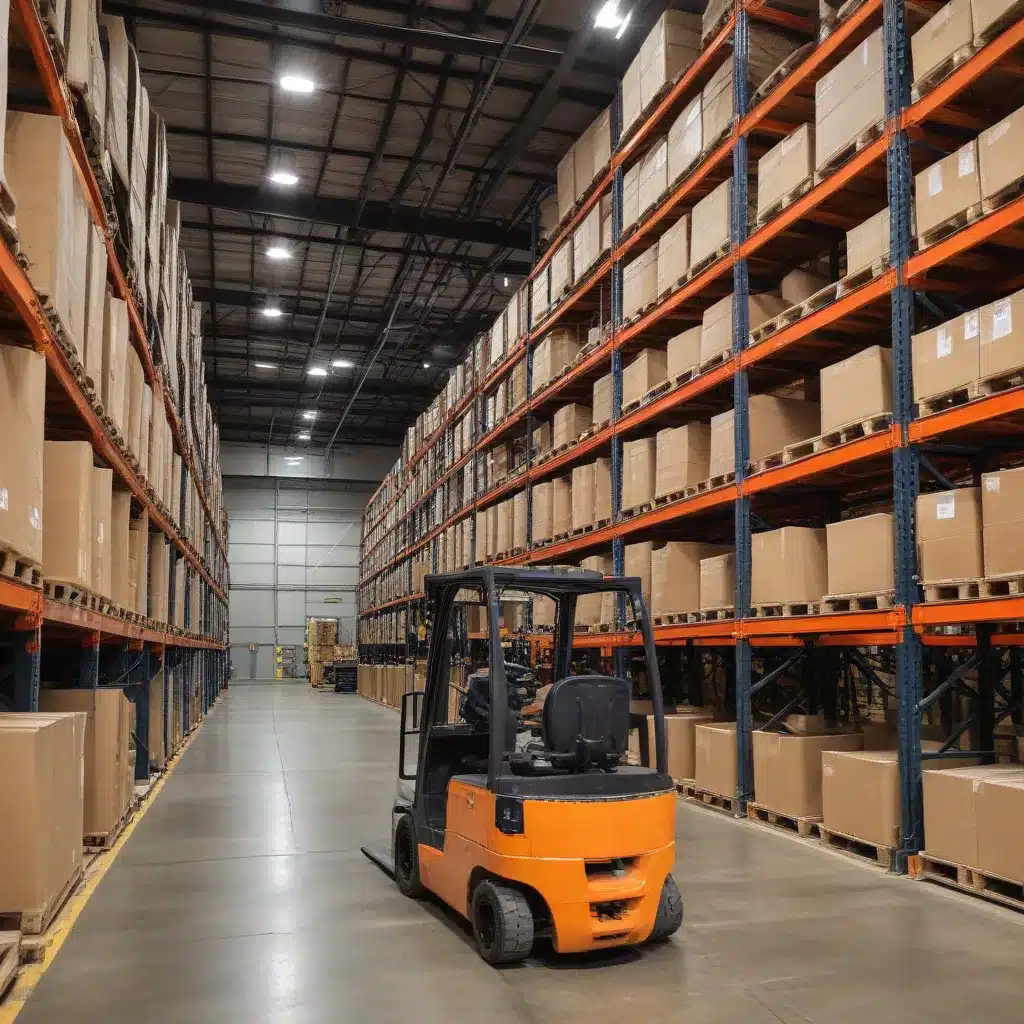
Maximizing Vertical Storage: A Game-Changer for Efficiency
Warehouse layouts significantly impact operational efficiency, and one of the most impactful strategies is maximizing vertical storage. By leveraging the height of your facility, you can store more items without expanding your warehouse’s footprint, leading to a significant boost in space utilization and overall efficiency.
To effectively implement vertical storage solutions, consider using:
- High-Reach Forklifts: These specialized forklifts are designed to access items stored on taller shelves, allowing you to maximize the vertical space in your warehouse.
- Order Pickers: Also known as stock pickers or cherry pickers, these forklift attachments enable workers to safely reach and retrieve items from high shelves.
- Pallet Racks: Sturdy and adjustable pallet racking systems provide a flexible framework for storing items vertically, making the most of your available space.
Safety is paramount when it comes to high stacking. Ensure that your racking systems are well-maintained and sturdy, and train your staff on safe stacking practices. Regular inspections and compliance with local safety regulations are crucial to prevent accidents and ensure a secure working environment.
Determining the Optimal Aisle Width for Forklift Efficiency
Striking the right balance between storage capacity and forklift maneuverability is essential for warehouse efficiency. To determine the minimum aisle width for your facility, use this simple formula:
Basic Right-Angle Stacking Width + Load Length + 12 Inches = Minimum Forklift Aisle Width
The basic right-angle stacking width is the smallest space a forklift needs to make a 90-degree turn and enter a pallet, which can be found on the manufacturer’s product page or by consulting your forklift supplier. The load length varies depending on the product and pallet type you handle, while the 12-inch measurement is the generally accepted space needed for trained forklift operators to clear any obstacles.
Different forklift models have varying aisle width requirements. For example:
- Traditional sit-down, internal combustion forklifts typically need aisles as wide as 13 to 14 feet.
- Electric rider forklifts can function in 10.5- to 12-foot aisles.
- Single reach trucks are designed for 9-foot aisles.
- Specialized VNA (very narrow aisle) forklifts can navigate aisles as narrow as 6 feet.
Ultimately, the right aisle width for your warehouse depends on the specific equipment you use, the size and weight of your loads, and the skill level of your forklift operators. Always consult the manufacturer’s guide and consider both your current and future product handling needs when designing your warehouse layout.
Optimizing Forklift Traffic Flow
Creating efficient routes for forklifts is crucial for a smooth workflow. Minimizing travel distances can significantly boost productivity and reduce wear and tear on your equipment. Plan routes that avoid unnecessary turns and obstacles, and consider implementing dedicated forklift lanes to enhance safety and maintain clear walkways for pedestrians.
Traffic management systems can further optimize forklift operations by coordinating the movement of multiple forklifts, preventing congestion and collisions. These systems help maintain a streamlined workflow, leading to faster and more efficient operations.
Strategically Placing High-Demand Items
Maximizing efficiency in your warehouse doesn’t just come from managing the physical layout – it also involves smart product placement. By grouping high-demand items together and positioning them close to the packing and shipping areas, you can save time and effort for your workers.
This simple strategy can make a big difference in how quickly orders are picked and packed. Placing popular or frequently used items in easily accessible locations reduces the time workers spend walking around the warehouse, allowing them to focus on their tasks more efficiently.
Harnessing the Power of Automation
Automation technology can be a game-changer when it comes to optimizing warehouse operations, particularly in improving forklift efficiency. Integrating automated systems can help reduce the workload on human operators, minimize errors, and optimize routes and inventory management.
Some common types of automation that can enhance forklift performance include:
- Automated Storage and Retrieval Systems (AS/RS): These systems use specialized machinery to store and retrieve items, allowing forklifts to focus on more complex tasks.
- Automated Guided Vehicles (AGVs): Self-driving vehicles that can transport goods within the warehouse, freeing up forklifts for other operations.
- Robotic Picking Systems: Advanced robotics that can pick and pack items, streamlining the order fulfillment process.
To successfully implement automation in your warehouse, start by identifying the specific areas where it can provide the most significant benefits. Conduct a thorough assessment of your current operations, identify bottlenecks, and explore how automation can address those challenges. Develop a clear implementation plan, ensure proper training for your staff, and continuously monitor and optimize the automated systems to maximize their impact.
Enhancing Safety and Visibility
Maintaining a safe and organized warehouse is crucial for both productivity and employee well-being. Clear traffic patterns and proper lighting play a vital role in ensuring smooth forklift operations and reducing the risk of accidents.
Designate dedicated forklift lanes and use signage, floor markings, and physical barriers to guide the flow of both forklift and pedestrian traffic. This helps minimize cross-traffic and congestion, creating a safer working environment.
Proper lighting also contributes to improved visibility, making it easier for forklift operators to navigate and handle goods safely. Consider using a combination of overhead lighting, task lighting, and motion-activated fixtures to ensure adequate illumination throughout the warehouse.
By optimizing your warehouse layout and incorporating smart strategies like vertical storage, strategic product placement, and automation, you can unlock the full potential of your forklift fleet and boost overall productivity. Remember, a well-designed warehouse is not only more efficient but also safer for your employees, ultimately leading to a more profitable and sustainable operation.
For more expert tips and insights on forklift reviews, safety guidelines, and industry trends, visit Forklift Reviews.

